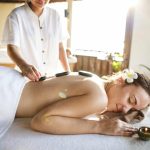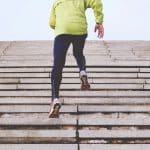Whether you’re a seasoned marathon runner or a newcomer to the ultra-trail running community, you’ve likely experienced the ailments of Delayed Onset Muscle Soreness (DOMS). The intense bouts of exercise during marathon training and running can lead to micro-tears in the muscle fibers, causing discomfort and inflammation post-race. This article will delve into the best recovery modalities available for ultra-trail runners, from massage to compression techniques, aiming to offer the best tips and strategies to help athletes improve their post-race recovery and performance.
The Importance of Recovery Post-Exercise
Before jumping into specific recovery techniques, it’s vital to understand the importance of recovery post-exercise. The quest for achieving peak performance doesn’t end when you cross the finish line. In fact, recovery is just as crucial to your performance as the time spent on the trails.
Lire également : How Can Coaches Utilize Drone Footage to Analyze and Enhance Rugby Team Formations?
When you exercise, your muscles undergo significant stress and demands, leading to micro-damage and depletion of energy stores. This strain is especially pronounced in ultra-trail running, where athletes challenge their limits over strenuous terrains for extended periods. To repair this micro-damage and replenish energy stores, your body needs to engage in active recovery.
Recovery is a multi-faceted process, encompassing rehydration, nutrition, active recovery exercises, and rest. However, certain techniques and modalities can aid in reducing DOMS, accelerating recovery, and preparing your body for the next training session or race.
Sujet a lire : What Are the Effects of High-Intensity Interval Training on Cognitive Function in Sprinters?
Massage Techniques for DOMS Reduction
Massage is a popular recovery modality among athletes, with a systematic review in the journal Sports Medicine showing a positive correlation between massage and DOMS reduction. But what are the underlying mechanisms?
Massage can increase blood flow to sore muscles, promoting the removal of waste products and the delivery of nutrients necessary for muscle repair. Furthermore, massage can decrease inflammation and promote cellular functions responsible for muscle regeneration.
Manual massage and foam rolling are common techniques used by runners. Manual massage involves hands-on manipulation of muscle tissues, while foam rolling is a form of self-myofascial release that uses a foam roller to apply pressure to specific muscles.
When incorporating massage into your recovery routine, focus on the muscles that were most utilized during your ultra-trail run.
Compression Wear for Training and Recovery
Another widely used modality in the world of sports recovery is compression wear. According to a study published in the Journal of Strength and Conditioning Research, wearing compression garments post-exercise can significantly reduce DOMS and improve performance.
Compression wear, such as socks, sleeves, and tights, work by applying constant pressure to the body. This pressure can enhance circulation, thereby facilitating waste removal from the muscles and speeding up recovery.
Remember, though, that while compression wear can aid in recovery, it’s not a miracle cure. It should be used alongside other recovery strategies, such as adequate nutrition and rest.
Exercise as an Effective Recovery Modality
Contrary to what some may believe, light exercise can be one of the most effective modalities for DOMS recovery. A meta-analysis in the Journal of Athletic Training found that active recovery significantly reduces muscle soreness compared to passive recovery.
Light exercise can stimulate blood flow, promoting nutrient delivery to the muscles and removal of waste products. It can also help restore the full range of motion that may be compromised by DOMS.
Exercise modalities such as walking, cycling, and swimming can be effective for active recovery. However, the intensity should be low—think of it as a gentle movement rather than a training session.
The Role of Sleep in Athlete’s Recovery
Sleep is often overlooked in the domain of sports recovery, but it is, in fact, one of the most potent recovery modalities. The Journal of Sports Sciences published a study revealing that poor sleep quality can hinder recovery and negatively impact performance.
During sleep, your body releases growth hormones responsible for muscle repair and regeneration. Furthermore, sleep can help replenish glycogen stores, a primary energy source for endurance athletes.
Incorporating good sleep hygiene into your recovery routine—like maintaining a regular sleep schedule, creating a restful environment, and avoiding stimulating activities close to bedtime—can make a significant difference to your recovery and performance.
Recovery is an integral part of every athlete’s training regimen. While there’s no one-size-fits-all solution for DOMS, combining various modalities like massage, compression, light exercise, and good sleep can help ultra-trail runners bounce back faster and stronger. Remember, a well-rested athlete is a high-performing athlete. Despite the absence of a final verdict, the journey to recovery is as rewarding as the race itself.
Water Immersion Therapy for Post-Exercise Recovery
Water immersion, particularly cold water immersion, is an increasingly popular recovery modality among endurance athletes due to its effectiveness in reducing DOMS. Immersing the body in cold water post-race can aid in alleviating muscle soreness and enhancing recovery.
According to a meta-analysis published in the Sports Medicine journal, cold water immersion can help limit exercise-induced muscle damage and reduce inflammation. The underlying mechanism involves vasoconstriction, a narrowing of the blood vessels that helps reduce swelling and inflammation by decreasing blood flow to the affected areas.
Cold water immersion is often used in combination with a technique called contrast water therapy, which alternates between immersion in cold and warm water. This method enhances blood flow and helps flush out waste products, further aiding muscle recovery.
Despite its benefits, though, water immersion therapy should be used cautiously. The temperature and duration of immersion should be carefully controlled to avoid adverse effects. As with any recovery modality, it should be tailored to the individual athlete’s needs and preferences.
Remember, water immersion is just one of many recovery strategies available. It can be a beneficial addition to your recovery routine, but it should not replace other essential strategies such as adequate sleep, nutrition, and active recovery exercises.
Nutrition and Hydration as Key Recovery Factors
The role of nutrition and hydration in recovery cannot be overstated. Consuming the right nutrients and staying well-hydrated after a strenuous ultra-trail run is crucial to repair muscle damage and replenish energy stores.
Post-exercise nutrition should focus on replenishing glycogen stores and providing the necessary nutrients for muscle repair. According to a study found on Google Scholar, consuming protein and carbohydrates within 30 minutes of finishing an exercise session can enhance recovery and reduce muscle soreness.
Hydration, too, plays a critical role in recovery. Water aids in nutrient delivery to the muscles, removal of waste products, and maintaining electrolyte balance in the body. Dehydration can amplify the effects of DOMS and hinder recovery, making it essential to rehydrate post-race even if you don’t feel particularly thirsty.
Incorporating these two factors into your recovery routine can significantly improve your recovery outcomes. However, it’s important to remember that each individual will have different nutritional needs based on variables like body weight, the intensity of the exercise, and personal goals.
Conclusion
Reducing DOMS and enhancing post-race recovery is instrumental for ultra-trail runners aiming to maintain performance and prevent injuries. Recovery modalities such as massage, compression wear, light exercise, adequate sleep, water immersion, and proper nutrition and hydration are all scientifically backed strategies that can substantially aid in the recovery process.
Nevertheless, it’s essential to remember that recovery is not a one-size-fits-all process. Each runner will respond differently to various modalities, and what works best for one person may not necessarily work for another. Therefore, it’s crucial to listen to your body and tailor your recovery strategies to your specific needs and responses.
Lastly, while there is an abundance of research on recovery modalities available on PubMed and Google Scholar, it’s important to keep abreast of new studies and emerging recovery techniques. As the saying goes, knowledge is power, and the more informed you are about recovery strategies, the better equipped you will be to optimize your post-race recovery and performance.






